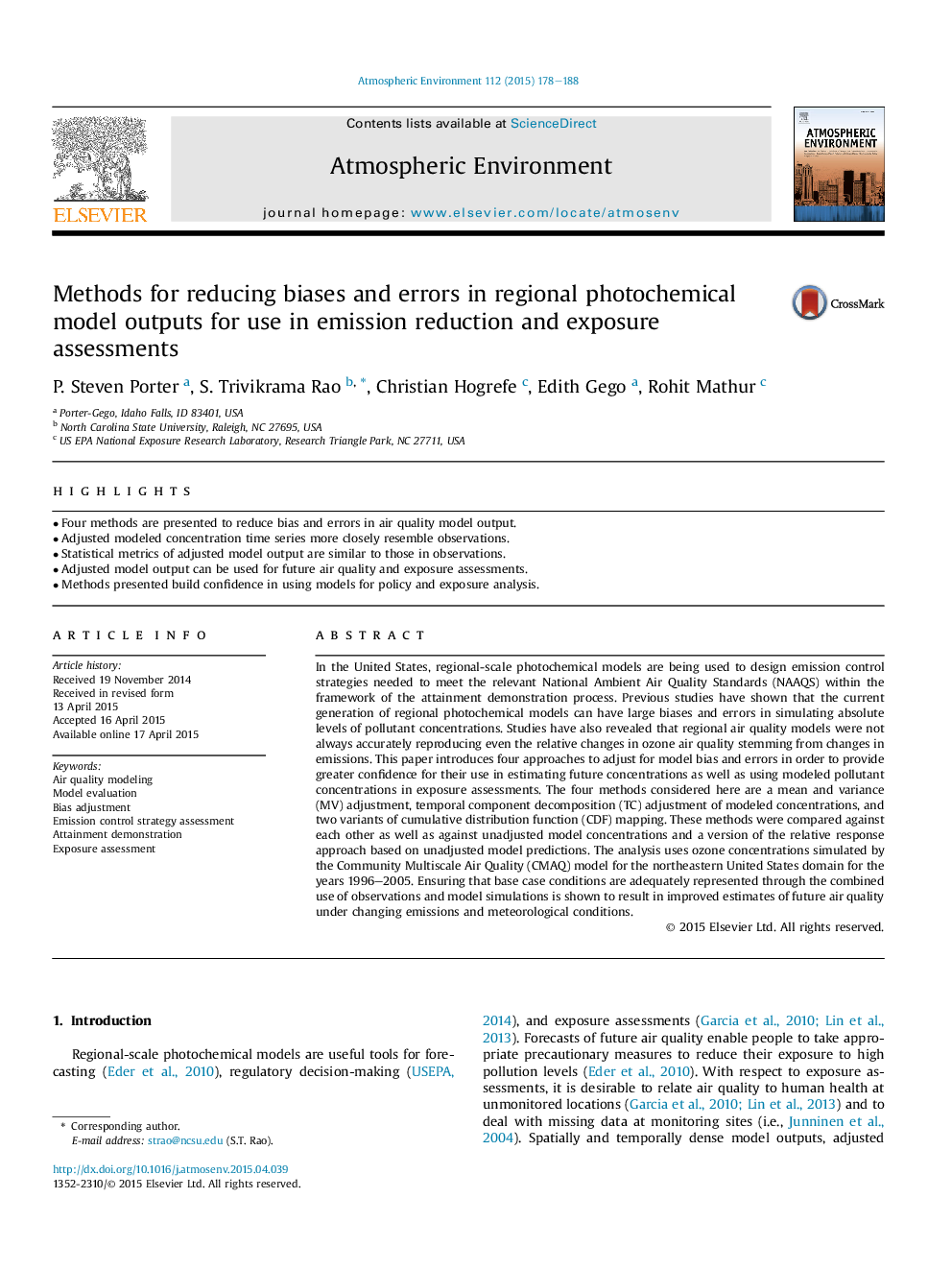| Article ID | Journal | Published Year | Pages | File Type |
|---|---|---|---|---|
| 6338063 | Atmospheric Environment | 2015 | 11 Pages |
Abstract
In the United States, regional-scale photochemical models are being used to design emission control strategies needed to meet the relevant National Ambient Air Quality Standards (NAAQS) within the framework of the attainment demonstration process. Previous studies have shown that the current generation of regional photochemical models can have large biases and errors in simulating absolute levels of pollutant concentrations. Studies have also revealed that regional air quality models were not always accurately reproducing even the relative changes in ozone air quality stemming from changes in emissions. This paper introduces four approaches to adjust for model bias and errors in order to provide greater confidence for their use in estimating future concentrations as well as using modeled pollutant concentrations in exposure assessments. The four methods considered here are a mean and variance (MV) adjustment, temporal component decomposition (TC) adjustment of modeled concentrations, and two variants of cumulative distribution function (CDF) mapping. These methods were compared against each other as well as against unadjusted model concentrations and a version of the relative response approach based on unadjusted model predictions. The analysis uses ozone concentrations simulated by the Community Multiscale Air Quality (CMAQ) model for the northeastern United States domain for the years 1996-2005. Ensuring that base case conditions are adequately represented through the combined use of observations and model simulations is shown to result in improved estimates of future air quality under changing emissions and meteorological conditions.
Related Topics
Physical Sciences and Engineering
Earth and Planetary Sciences
Atmospheric Science
Authors
P. Steven Porter, S. Trivikrama Rao, Christian Hogrefe, Edith Gego, Rohit Mathur,
